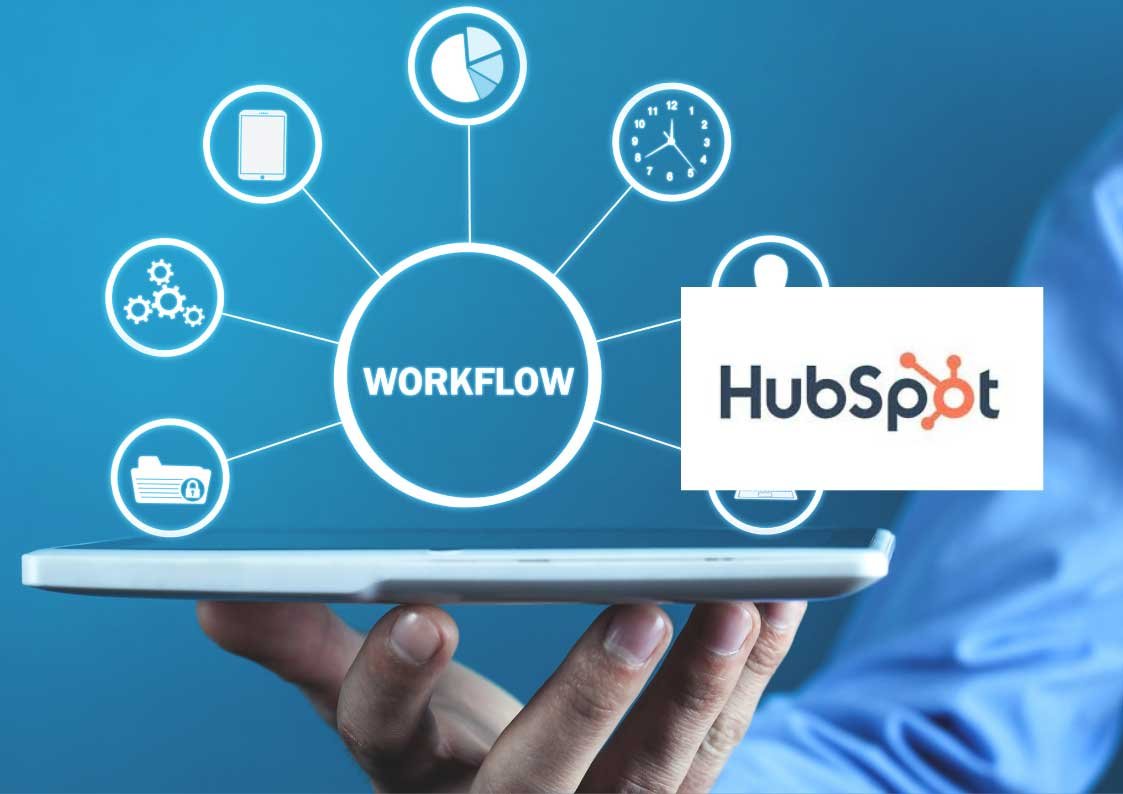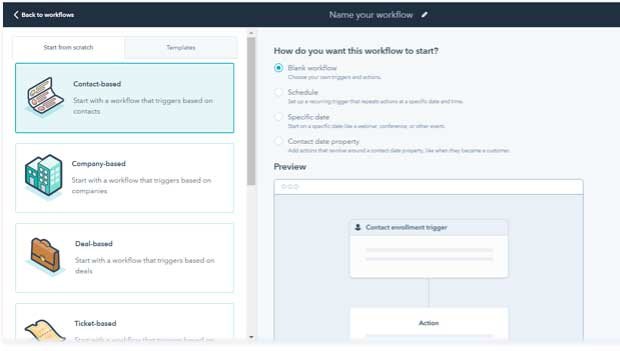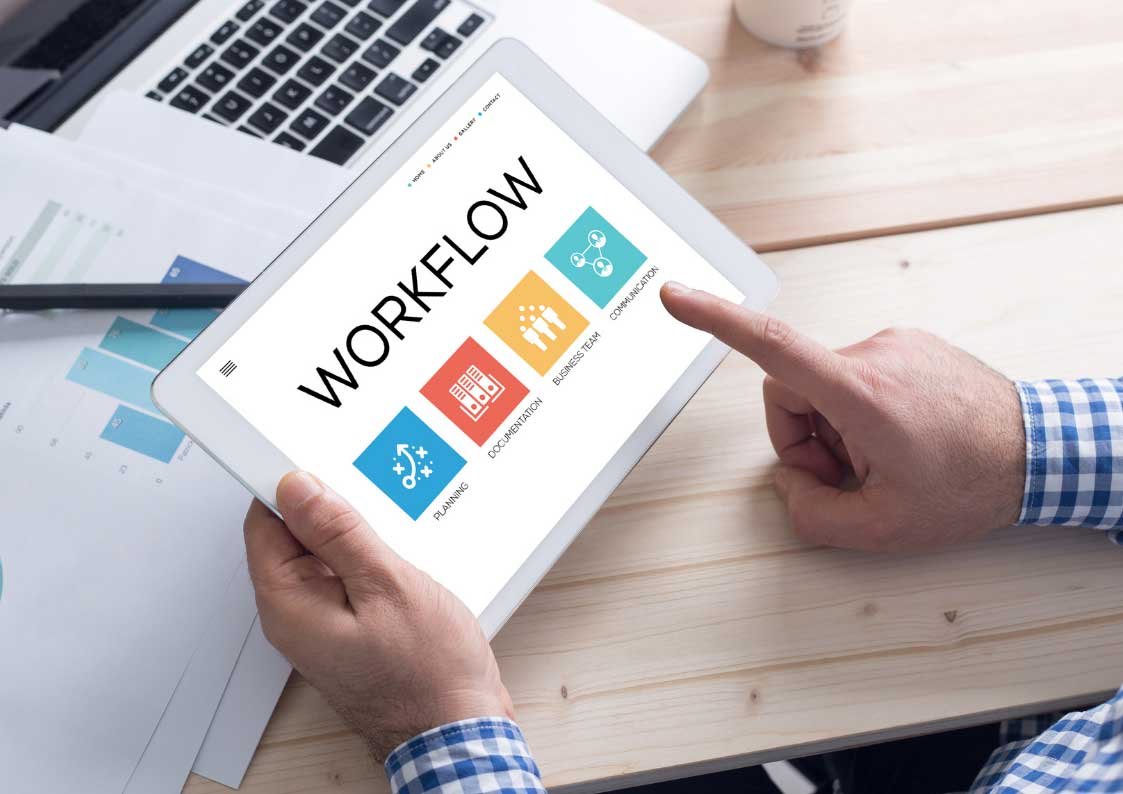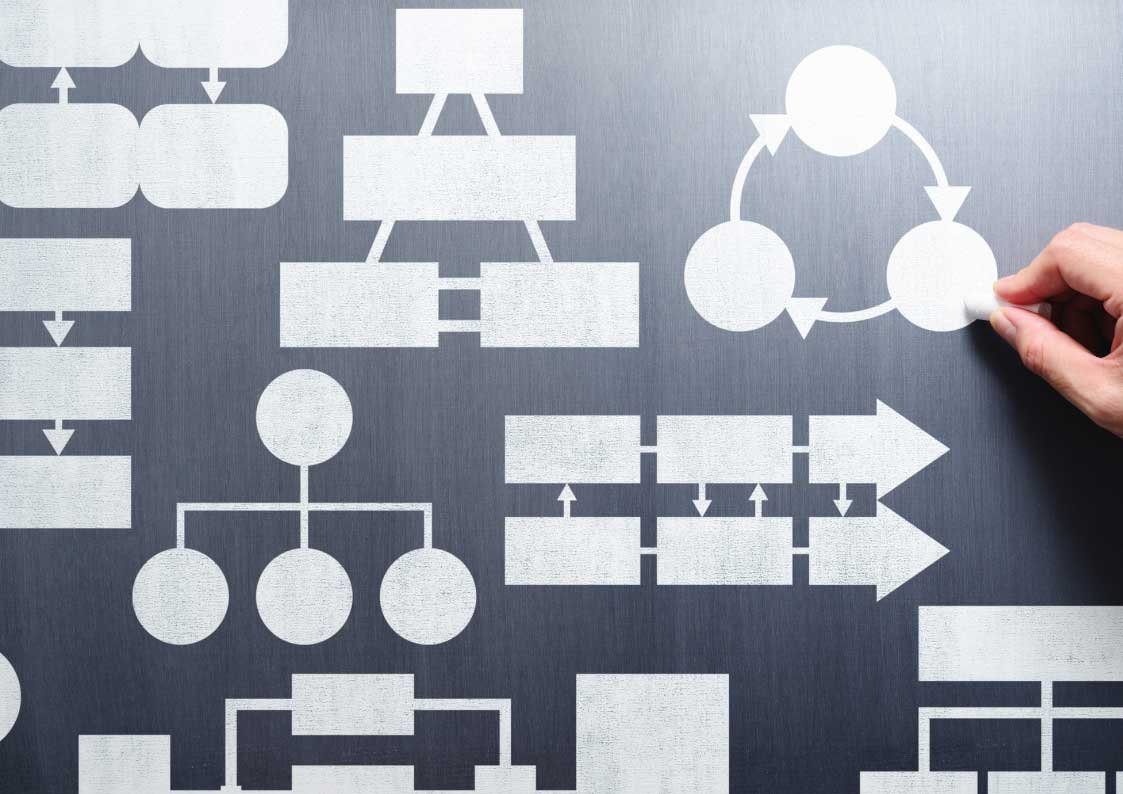HubSpot Marketing Automation
Marketing automation is primarily used for marketing tasks. The goal of marketing automation is to save time and increase velocity by automating otherwise manual tasks.
Benefits of Marketing Automation
- Marketing automation makes it easy to boost efficiency and nurture leads.
- Marketing automation helps marketers complete repeatable tasks with ease, which is a big part of why progress is so fast for this marketing technique.
- Marketing automation is used by companies to increase revenue and improve customer service.
- Marketing automation allows customers to receive more targeted communication, which helps convert leads into paying customers.
- Marketing automation is a tool that helps marketers increase conversion rates.
- Marketing automation helps customers find the right products and services more easily.
- HubSpot marketing automation software can be used to send automated, personalized messages to people who are visiting your website on behalf of brands you’re targeting, with the goal of increasing relevance and conversions for those prospects.
- Marketing automation software can help you track sales leads or customer acquisition opportunities from all over the internet in one place, with the goal of helping create ROI for your company through increased revenue generation and reduced cost per lead.
Get 10-15% discount on HubSpot! Contact Us.
How to Create Workflows in HubSpot?
- To create a workflow, click on the “Automation > Workflows” menu in any HubSpot CRM portal.
- Click the “Create Workflow” button on this page and follow the instructions to make one.
- To trigger your workflow, enter an enrolment trigger that is relevant to whoever wants to be part of it (for example, an email sent out).
- You can test, review, and publish workflows.
- These are the types of workflows: contact-based, company-based, deal-based, ticket-based, quote-based, conversation-based, and feedback submission.
Benefits of Using Marketing Automation Workflows
Let’s see how marketing automation workflows benefit your eCommerce business.
Saves your time
It makes no difference how big or little your company is. You must complete a number of tasks. However, there are only 24 hours in a day for everyone. These routines can also help you save time if you’re short on time.
You may use these workflows to automate a variety of operations, including sending emails, assigning tasks to your reps, nurturing leads, and more.
Make each user feel special
You can construct tailored emails using HubSpot personalise tokens and properties, which you’ll send through these emails. By sending personalized emails to all of your customers, you may improve their customer experience and make them feel unique.
Better customer nurturing
These workflows will assist you in delivering content at every stage of the buyer’s journey. You can provide content for the stages of awareness, consideration, and decision. You can better nurture your users if you do this. Nurturing your customers guarantees that they smoothly transition to the next step.
Types of Workflows on HubSpot
HubSpot allows you to create seven different types of workflows.
1. Contact-based workflow
These are triggered by an object that is in the contact list, such as a customer’s email address or phone number.
2. Company-based workflow
These are triggered when an item is added to the company created on HubSpot and can be used for general marketing automation or eCommerce workflows like lead management.
HubSpot offers a range of automated engagement plans for leads, with the goal of increasing velocity. Workflows allow internal stakeholders to be notified when a lead moves through the sales funnel.
3. Conversation-based workflow
Only the attributes of contacts linked with the discussion can be managed in conversation-based processes. HubSpot sets the conversation properties for you and you can’t change them. Only contact-based workflows can set email subscription status and marketing contact status.
4. Deal-based workflow
When a user creates an open deal, he or she does not choose a close date explicitly. A user can move a deal from the closed-won deal stage to the closed-lost deal stage, or vice versa.
5. Ticket-based workflow
You can keep track of trends and arrange all of your customer inquiries in one location using tickets. Individual tickets can be created via the tickets index page, a contact record, or the conversations inbox. Workflows and the support form can also be used to automate the procedure.
6. Quote-based workflow
Quote-based workflows in HubSpot are personalized workflows that quote a customer’s individual order. These workflows can be used for many things, including making proposals, processing orders, and creating web pages with prospect-specific price information.
7. Feedback submission-based workflow
When contacts respond to your surveys, you can use the submission data in HubSpot products to learn more about how they feel about your company.
Feedback submissions are an object in HubSpot that keeps information from a feedback survey. Net Promoter Score (NPS), Customer Satisfaction (CSAT), Customer Effort Score (CES), and Custom Surveys are all examples of this.
Need help with HubSpot’s automation workflow? Contact Us.
9 Best HubSpot Marketing Automation Workflows for eCommerce
1. Welcome email workflow
Plan a series of welcome emails to give your guests a warm greeting. The average open rate for welcome emails is 50%. This is an 86% improvement over traditional newsletters.
Keep in mind that the purpose of your welcome email is to meet the user first. The decision to acquire something will be made later. It can include a brief welcome message as well as the appropriate CTA(s). If the user responds to your welcome email, you can send them a follow-up email containing articles and relevant information to onboard them. The third email can provide further information about your products or services.
2. Lead assigning workflow
A crucial HubSpot eCommerce workflow is lead handoff or lead rotation. You can initially assign a contact/lead to a specific member of your team to nurture it through this method.
For example, each user who fills out an enquiry form on your website will be put to your CRM as a contact. You may then use conditions to allocate that user to a specific representative in your company to assist him.
3. Hot lead workflow
Hot leads are the low-hanging fruit for your business. A hot lead is more likely to convert, and the right message can help them become customers. Create a HubSpot workflow that tells your sales team when a contact has progressed to the hot lead stage to do this.
Some of these properties can be used for this, such as the number of downloads, Email Open Rates, CTRs (Click Through Rates), and so on. This will help you figure out how much traffic your website gets.
- If the contact is sufficiently engaged on your website, you can set the workflow to trigger and present her with the best offers.
- If the contact is interested in your products, you can change their stage in the lifecycle.
4. First order discount workflow
Every eCommerce business today does it. A new member is offered a discount code to utilize on their first purchase when they join their platform.
This is a brilliant way of convincing customers to buy something without actually convincing them. Buyers who use discount codes spend 24% more than those who do not, according to reports.
You can create a coupon and send it to your clients via the Welcome email. If you don’t want to include the coupon in the welcome email, you can send it when someone interacts with it.
This is how the procedure can appear:
If a user receives a discount on their first order, they are more likely to purchase something. I’m speaking from personal experience because I strive to be optimistic at all times.
As a result, make sure to provide a discount on the first purchase, as this is a common trend and a great way to move buyers through the buyer’s journey.
Let’s look at some of the other HubSpot eCommerce Workflows you’ll require for your business.
5. Customer re-engagement workflow
If your leads aren’t interacting with you over time, don’t give up. It’s conceivable they’ve forgotten about you or are trying to benefit from your business. It’s your job to persuade them to wake up or to make an irresistible offer.
Identifying events that may have contributed to their leaving might help you create a re-engagement workflow. Start this HubSpot workflow after a specified amount of time has passed since they last completed an action (Like email open, form submission, or visits).
You may detect inactive leads, change their email settings, and give them freebies and coupons based on their prior downloads and website actions.
6. Abandoned cart recovery workflow
Every year, eCommerce businesses lose $18 billion due to abandoned carts. That is a ridiculous amount of money.
At the very least, this approach will allow you to recoup part of the funds for your company.
This HubSpot marketing automation pipeline can be triggered when someone adds something to their online shopping cart and then abandons it without completing the transaction.
You can use this workflow to provide consumers with a link to their abandoned cart, which includes the products they added. They’ll be routed to their cart if they click the link, making it simple for them to make the transaction.
7. Post-purchase feedback workflow
After a consumer makes a purchase from you, responding to their concerns provides them with the sensation of being in good hands. Because they may have encountered issues during the checkout process or during the shipment procedure. Anything is possible.
The whole customer experience is improved with this HubSpot Marketing Automation Workflow. According to Bill Gates, your most dissatisfied customers are your best teachers.
Your dissatisfied consumers will complain about the drawbacks of your company process, whereas your satisfied customers will provide positive feedback, testimonials, and case studies.
Even if your clients adore your product, you can use this procedure to gather positive feedback that you can use later.
8. Upselling workflow
Upselling is a marketing strategy that encourages customers to upgrade their product or service without being pushed. If you’re unfamiliar with the concept, look into the greatest upselling methods to learn more.
Converting an existing customer is 50% easier than finding a new one. So, why not make the most of your time by using this eCommerce marketing automation strategy to upsell your products and services?
Even if you sold them before, don’t stop engaging with them. Provide product recommendations, bundle products, display related products intelligently, and track KPIs.
This HubSpot eCommerce workflow has the ability to significantly increase your revenue. As a result, make a note of it in your HubSpot CRM.
9. Customer happiness workflow
This HubSpot Marketing Automation Workflow can assist you in determining your customers’ willingness to suggest your products and services to others.
It’s the same as assessing total client satisfaction with your products and services. This marketing workflow not only assists you in identifying your satisfied consumers. It also assists you in identifying unsatisfied consumers and ways to improve their overall customer experience.
To determine the optimum customer score, create a smart list of satisfied customers by establishing a threshold.
Set up two different HubSpot workflows for your satisfied and dissatisfied customers. Trigger a HubSpot process for your delighted customers using a filtered list of customers to send them exclusive offers, prizes, and content.
Another is for your dissatisfied customers, with content/offers aimed at improving the entire customer experience.
Address the issues that are causing your clients to be unhappy. Make a list of them and gradually cross them off as you turn your unhappy feelings into pleasant ones.
Improving eCommerce Customer Satisfaction Using HubSpot Workflows
There are a number of ways that HubSpot marketing automation workflows can be used to improve eCommerce customer satisfaction. One way is to use workflow automation to create and send automated customer satisfaction surveys to customers after they have finished purchasing a product or service.
You can also automate the process of contacting customers for follow-up or if a customer has a question about their order. The primary focus of HubSpot’s marketing automation tool is on marketing, but there are several features that are useful for other aspects of your business.
Need an expert hand to set up these workflows?
Are you starting a business that wants to know more about HubSpot? Do you want to use HubSpot Marketing Automation Workflow to make your marketing process easier, faster, and more effective? We recommend you to partner with one of the most trusted HubSpot Partner agencies – Ubique Digital Solutions. UDS is a HubSpot Diamond Partner that offers different services including marketing automation, CRM, website designing, and many more. Reach out to us today.











